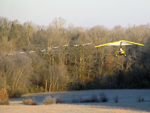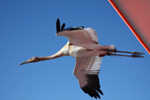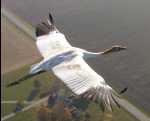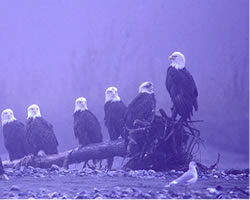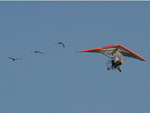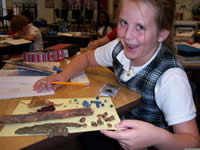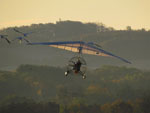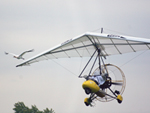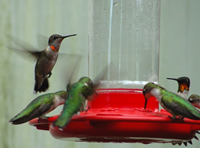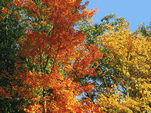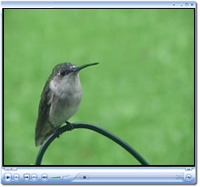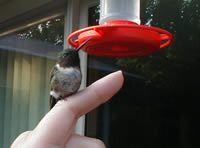
Welcome...Spring's
Journey North is Underway!
January - July, 2012
| Quick Links: | |
"Journey North News" updates are the core of Journey North. They are published on this Web site and by e-mail. These updates include the latest migration maps and data, and they summarize news about the migrations and seasonal events we are tracking. Check the calendar for for each species and seasonal event.
Quick links to each news story are listed here...

Countdown to Mystery Class: One Month to Go!
Mystery Class begins January 30th! Get ready this month by writing riddles about key words and concepts. Also, continue practicing daylength calculations and report your photoperiod for January 1st.
Image: John Walker, Fourmilab
"Journey South News" updates are the core of Journey North. They are published on this Web site and by e-mail. These updates include the latest migration maps and data, and they summarize news about the migrations and seasonal events we are tracking. Check the calendar for for each species and seasonal event.
Quick links to each news story will be listed here...
They've now tallied 693 miles and enjoyed the only 4-consecutive-flight streak of this migration. It was followed by five days grounded at the first stop in Alabama, but his weekend's weather looks good for flying. Daily photos and questions add to the front-row fun. Image: Linda Reynolds
This week brought the halfway mark of the journey south and another state border crossed. With 569 miles gone, they have one stop remaining in Tennessee. Fun photos, fascinating discoveries and new math challenges spice up daily reports. Go Cranes! Image: Operation Migration

Tulip Test Garden Update: December 8, 2011
Punxsutawney plants a garden! Expand your thinking to the global climate. Explore the difference between weather and climate.
This week brought 3 legs gained and a state border crossed for a gain of 164 miles. There were the inevitable weather delay days too, but spirits soared when they left Illinois behind. Daily reports this week offer plenty to see and explore. The Class of 2011 is making progress! Image: Operation Migration

Countdown to Mystery Class: Two Months to Go!
The globe is a model of Earth. Each part gives information about our planet. Build sleuthing skills by looking at the globe with the eyes of a detective: What features are related to time and seasonal change? Image: American Road
From sunrise to sunset, how does your daylight compare with other locations on the globe? Report for December 1st, then use the photoperiod map as a springboard for discovery. Also this month, experience the amazing seasonal phenomenon of bald eagle and salmon migrations happening RIGHT NOW in Alaska.
The week was remarkable in reaching the longest stretch of consecutive down-days in the history of the migration. Why? The weather! Each day we've explored related topics from wind to predators to flight, GPS, and more. When will the weather let them fly? Image: Operation Migration

Your butterflies are welcomed to Mexico. The first school visits have begun. Learn about the return of "Rocinante" to carry the butterflies to the sanctuary schools. Students plant oyamel fir trees in their school yards to symbolize their efforts at monarch conservation. Visit the galleries of beautiful butterflies.
Powerful winds and occasional rain skunked migration progress this week, stalling them 7 days in Livingston County, Illinois. Catch up with our daily reports and discover how the birds act when bored, how the team tries to prevent that, and why they don't truck the birds on no-fly days. Stay with us; they WILL make it! Image: Chris Linnell

Monarch Butterfly Migration Update: November 10, 2011
Thank you for helping to track the monarch's migration to Mexico! Join us again in February, 2012. We'll begin with weekly news from Mexico, and preparations for spring migration.
We end our fall season with a key question: How many monarchs made it to Mexico, and how is the population doing? Image: Filipe Martinez

Tulip Test Garden Update: November 10, 2011
M is for microclimate! Explore the essential question, "How do climate conditions affect plant growth?" Use your school yard to study microclimates created by sunlight, humidity, moisture, and wind. Then try the Microclimate Challenge. Visit some Test Gardens. Study temperatures across the Northern Hemisphere in the Map Handout questions.

Just as the first monarchs are arriving in Mexico, so are the Symbolic Monarchs! Learn more about the seasonal and cultural events that take place in Mexico during this special time of year. The Symbolic Butterfly Sample Gallery is open. See a sampling of amazing butterflies. Who are the participating schools? Add yours to the map.
In three great flights this week, the young cranes covered 145 miles into Illinois. They've mastered the drill and are giving us thrills! Keep up with the adventure with a front-row seat in our daily reports. Image: Judy Lyle

"Monarchs adorn the sky while people in town prepare one of our most significant festivities in all México, El Día de los Muertos," Estela Romero wrote this week. Why do monarchs fly across the continent to reach this part of Mexico? What's so special about this place? Image: Estela Romero
What does the changing season bring? Describe, draw, or collect things that represent change in your hometown. How many minutes a day are you losing? Everybody is noticing changes in daylight. Explore the map to find where they are gaining minutes every day. Report daylight for November. Show us what seasonal change looks like outside your window.

Countdown to Mystery Class: November, 2011
Three months to go! This month, capture students' questions about time, sunlight, and the seasons on Wonder Rings. Help students create a classroom learning center filled with kid-tested, teacher-approved books. Dive into reading and discover how authors explain the reasons for seasons.
Whoop! Week three brought 3 flights with some rodeos and chaos, but 80 miles gained. Thanks to longer flights and fly-able weather, Our beginners have reached the final stopover in the state of Wisconsin. NOW it feels more like migration! Image: Tom Schultz

The first monarchs have reached their winter home in Mexico! It's one of nature's great miracles. Monarchs find a place on the planet where none has ever been. This week, explore how the monarch's arrival is connected to Mexican traditions. Image: Estela Romero
The second week of migration brought no advance from Stopver #1. The single day of fly-able weather resulted in a crane rodeo, turnbacks, and one missing bird. Our daily reports let you keep up with the adventure in video clips, photos, lessons and questions. Better luck is coming! Image: Heather Ray

Northern Mexico's skies were "painted orange and black" this week as monarchs crossed in the thousands. Mexico's geography is funneling the migration into rivers of butterflies. Highway signs warn to drive carefully. Monarch butterflies are mariposas monarcas now! Image: Rocio Trevino
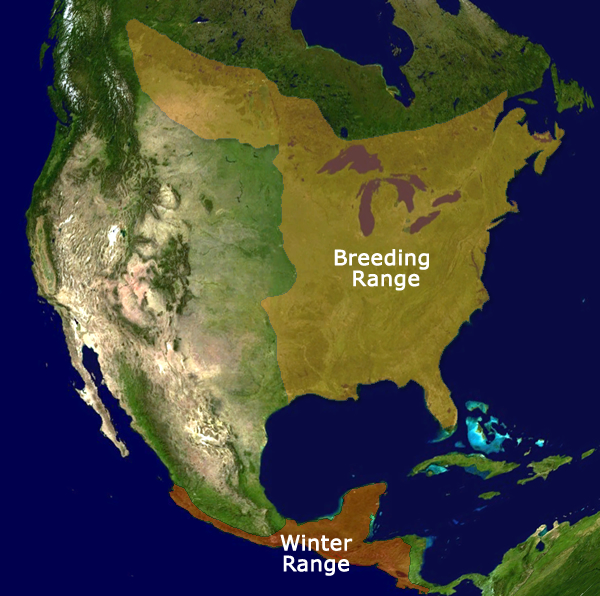
The first ruby-throats should be reaching Costa Rica right now, at the far end of the wintering range. A hummingbird that migrates from Quebec to Costa Rica would travel 3,500 miles! How far must one travel from your hometown to the hummingbird's winter home?
Migration is underway! The week's weather allowed three flight days and it took all three, plus six crates and two vans, to get the Class of 2011 to their first Stopover. Daily photos and questions keep YOU flying as we join the team for an up-close look at the Class of 2011's first journey south. Image: Heather Ray
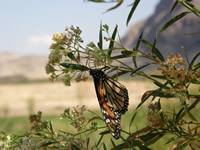
The migration is entering Mexico now, and warm fall temperatures in the north are giving monarchs more time to fly. How much farther must the monarchs travel? Compare distances from two flyways. Also, explore the food chain mystery. How are monarchs and aphids connected? Photo: Paul Nava
Fat and fluffy, eating voraciously, and trying to cope with cold. That's how the week went for hummers in the north. September has gone and so have most hummingbirds! Image: Eleanor Briggs
The unpredictable adventure begins! Seven birds in the Class of 2011 took off and three went the distance. Find details in our Day One report. Image: Tom Schultz
As September came to a close, hummingbird numbers dropped dramatically. During the past week, a ten-fold fall was not uncommon. The migration map is starting to show their absence. Can you tell a male from a female? Take a look! Image: Harlen Aschen
Migration take-off is just hours away. Why are treats an important part of the cargo? Who's the grouchiest bird? The shyest? All bio pages are newly updated. We just need the right weather and cooperative cranes Oct. 8! Image: Eva Szyszkoski, ICF
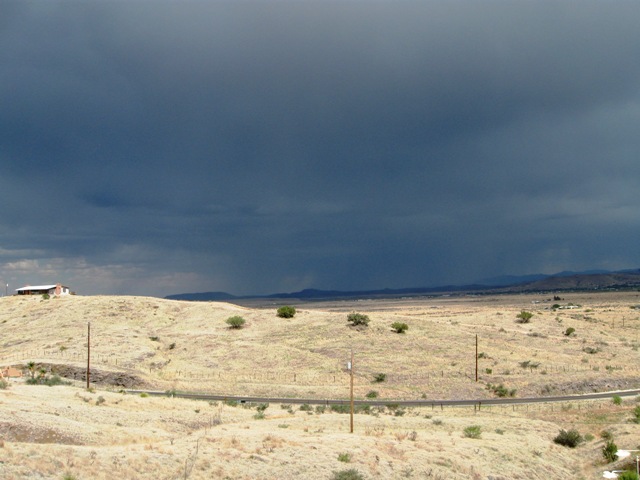
Monarchs are pouring into Texas now, and they're eating something surprising. Can you solve the mystery? Peak migration reports show monarchs moved in massive numbers this week. It's October. The monarchs must hurry before they're trapped by the cold! Explore how temperatures affect fall migration. Photo: Layla Battista

Tulip Test Garden Update: October 6, 2011
Your bulbs have arrived and you are about to start digging...but wait! Use scientific skills to weigh, measure, and draw your tulip bulbs. Then explore and learn more about this unique plant structure. Planting your Test Garden can spur questions that lead to experiments this fall. Design and set up a experimental "what if..."
From the Tropics to the Arctic, people reported their daylight hours on the Equinox. Explore the results. Mark your calendar to report again. Post a picture! What does seasonal change look like outside your window? Images: Mary Hosier

Countdown to Mystery Class: Four Months to Go
Autumn began in the Northern Hemisphere last week. It's a great time to explore the relationship between sunlight and seasonal change as you "countdown" the months before Mystery Class begins in January. map!
Crane #1 is flying again! The birds are now wearing new transmitters for radio tracking as preparations continue for their first journey south. Craniac Quiz #5 and our slideshow help YOU prepare for migration too. Photo: Brooke Pennypacker

Monarch Butterfly Migration Update: September 29, 2011
"We're ready to host the monarchs!" Estela Romero reports from Mexico. Meanwhile, millions of monarchs are headed their way. Learn how to count monarchs this week, using standard units. "Our 4th grade counted 20 monarchs in 30 minutes!" Arkansas students say.
"We were going through a gallon of bird soup a day!" proclaimed a Corpus Christi, TX, observer who fed 150 hungry hummingbirds in his backyard. "The numbers grew and grew until Sept 21. Then suddenly, most were gone." It was another peak week in the Gulf coast states. Observers share photos, videos and words of awe. Image: Harlen Aschen

Symbolic
Migration Update: Sept. 23, 2011
Reminder: "Symbolic Monarch Butterfly Migration" is starting. Only two weeks left! Postmark your butterflies by October 11, 2011. class is invited to participate in the 16th annual "Symbolic Monarch Butterfly Migration" with students across North America. Send a symbolic monarch to Mexico with 60,000 students in the United States and Canada.
Target departure for migration is now October 8. The colts are flying better each day. See how injured crane #1-11 proved he's on his way back. Play our Pecking Order game, tackle Craniac Quiz #4, and visit camp! Photo: Heather Ray

Monarch Butterfly Migration Update: September 22, 2011
The first day of fall is approaching, temperatures are falling, and monarchs are flying. This week, explore the world of monarch tagging. Tiny tags lead to big discoveries! Photo: Jim Gilbert
It was the second week of peak migration in southern states. "It is simply incredible. I can literally feel the wind generated by their wings!" wrote a woman in Louisiana. A hummer stopped for a sip--and her picture--while passing through Washington. Texans share concerns about the effect of drought. Image: Jack Moskovita
On September 11th, crane #1-11 caused a lot of work and worry for the team. Put yourself in Caleb's place as you read his story of a gut-wrenching day. Tackle Craniac Quiz #3 and visit flight school with this week's slideshow. Photo: Doug Pellerin

Monarch Butterfly Migration Update: September 15, 2011
Hundreds of people from Canada to Mexico reported migrating monarchs last week. When the butterflies came down to rest, some lucky people discovered an overnight roost: "We had hundreds of monarchs staying last night in the trees out back. What an amazing sight!" This week, learn about the overnight roost and the key role citizen scientists play in studying them. Photo: Pat Swerkstrom
Over 1,000 people reported hummingbirds this week. Some saw one. Others said they saw "too many to count." What are you seeing now that September is upon us? Watch a video clip of a hummer in a thunderstorm. See if you can solve a mystery: "I have a creature feeding outside my front door. WHAT is it?" Video: Christina Rollo
Flight school has its ups and downs, and target date for migration is now October 1! Tackle four fun questions in Crane Quiz #2, and view this week's slideshow: "Who Am I? Imprinting." Photo: Chuck Hayes
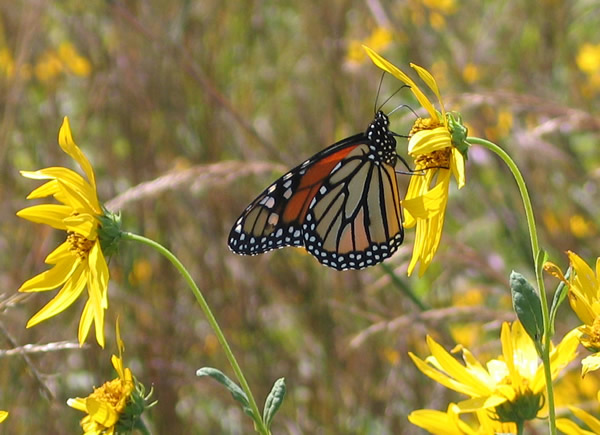
Monarch Butterfly Migration Update: September 8, 2011
The first strong cold front of the season sent monarchs sailing this week. Hungry monarchs stopped to feed from flowers as they traveled. This week, explore why nectar is so important to monarchs during fall migration. What concerns does Dr. Brower have as the monarchs approach drought-stricken Texas? Photo: Robert Woodward
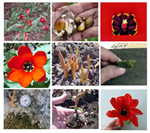
Tulip Test Garden Update: September 8, 2011
It's time to plant your tulip test garden. Your results will provide scientific data about the timing of plant growth in springtime. The information you send us will become part of a long-term database that was established in 1994. We hope you will enjoy this hands-on plant and climate study — and that you will contribute year after year!
It's early September and the hummingbird migration map is about to change. Hummers are disappearing in the north and appearing in the south in larger numbers. Observers share a heart-warming picture, words of wisdom, a yearning for spring, and a heart-felt goodbye. Please report your sightings!
Next month, 10 young Whooping cranes, now called colts, will take off on the longest journey of their young lives: a migration of more than 1,200 miles to Florida. Get to know these quirky crane-kids in Craniac Quiz #1 and explore the story in our slideshow/booklet, "Whooping Crane Comeback." Photo: Doug Pellerin

Monarch Butterfly Migration Update: September 1, 2011
Welcome to Journey South's fall migration season. As monarchs travel to Mexico through your hometown, what signs of migration might you see? This week, learn when, where, and how you can watch fall monarch migration. Please report your sightings! Photo: Vincent
Burrola

Symbolic Monarch Butterfly Migration
Sneak Preview: Symbolic
Migration 2011-2012
Your class is invited to participate in the 16th annual "Symbolic Monarch Butterfly Migration" with students across North America. Send a symbolic monarch to Mexico with 60,000 students in the United States and Canada.
New this year: Individual Butterflies Are Back!

Countdown to Migration Starts September 2, 2011
Led by ultralight airplanes, ten young Whooping cranes in the Class of 2011 will begin their first journey south in October! Weekly countdowns begin September 2, 2011
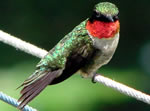
Seeing Hummingbirds? Reporting Starts August 19, 2011
Get ready to report your observations this fall as hummingbirds leave your backyard and migrate to their wintering grounds. With your help, we'll make a migration map to show where hummingbirds are present from August through December.

Monarch Butterfly Migration
Weekly Migration News Begins August 25, 2011
Get
ready to track the migration to Mexico. Find out how to report your sightings
and track the migration on real-time migration maps.
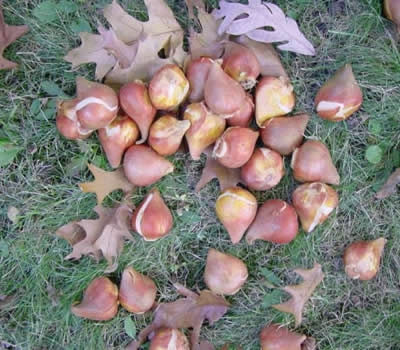
Tulip Test Gardens: Starts September 8, 2011
Get ready to plant your bulbs for this year's tulip project. Find out how to report your planting and track the arrival of spring on real-time maps. This project enlists the help of students as citizen scientists to monitor seasonal change in a scientific way.

Last winter, the monarchs were crowded into a few small sanctuaries. Look at the area they cover now! The migration has moved into Manitoba, and the northernmost monarchs have reached latitude 50° north. How much farther do you predict they'll travel? Photo: Steve Augustin

Hummingbird Migration Update: June 9, 2011
Fewer hummers at your feeder these days? Are these travelers really gone, or is something else at work? What do you think? Find out what an expert thinks. Watch this season's hummingbird migration maps in action. What big ideas can you learn from them? A BIG thank you for helping track hummers this spring! Photo: Jack Moskovita
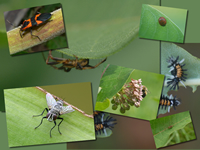
Journey North's other migrations have come to an end, but the monarchs are still traveling! Watch for weekly updates until the migration is complete, sometime in late June. No matter when you see your first monarch, please report your sighting! This week, meet some of the monarch's neighbors. What kinds of creatures inhabit the milkweed patch, and which are the monarch's enemies?

Hummingbird Migration Update: May 25, 2011
As hummingbirds reach their northern limits, celebration is in the air. North America's smallest backyards birds have now arrived across Canada. This week, explore why hummingbirds stop traveling where they do. What factors limit their northward expansion? This summer, plan to plant sweet treats to feed the hummingbird family that calls your backyard home. Photo: Jack Moskovita

The migration continued to advance during the past week—slowly, steadily, and a little early. We're still waiting for the big surge in numbers to occur. Is the drought in Texas affecting timing this spring? Did drought drive the monarchs out of Texas early? Explore how data citizen scientists are collecting helps answer key questions like these. Finally, take a close-up look at some amazing adaptations: larvae legs! Photo: Pat Swerkstrom

American and Canadian students wanted to know what life is like in the monarch butterfly overwintering region. They asked: What do your homes look like? What do you eat for lunch? How many monarchs do you see each winter? See how students at "Pedro Ascencio" School answered. Their one-room school house is located high in the mountains, near the Sierra Chincua Monarch Sanctuary. Photo: Estela Romero
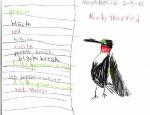
Strong winds helped send rubythroats into Alberta this week. As spring unwinds the maps are filling up with your sighting reports. Watch a slideshow of nestlings that become fledglings. Study the details in the hummingbird field guide created by students in Atlanta, Georgia. Photo: Verle Stuve
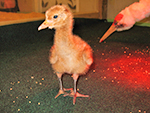
The journey north winds down and the first chicks for the Class of 2011 have hatched! See what's ahead for the fast-growing fluff-balls in our video clip and slide shows. New nests and chicks in Wisconsin create excitement, and nesting conditions in Canada are good. We end the season with tribute, celebration, and news of changes ahead. Thanks for joining us! Image: Operation Migration

Introducing the Class of 2011! Travel around our animated globe to meet and greet your new friends. Do you know which Mystery Class got covered in ash from a volcano? Which has kangaroos near their school? Which uses caterpillars for transportation? Find this out and much more!

Sailing on south winds, monarchs advanced dramatically during the past week. The migration entered 8 new states and the first Canadian province. Go monarchs! This week, compare a moth's migration to the monarch's. What can we learn from the corn earworm? Photo: Wikipedia

The best season in four years continues as the peak migration of mom/calf pairs thrills whale watchers. Posts #6 and #7 have both counted 100 calves so far! According to the sea ice map, how far north can the whales go this week? Dig into the data and our journal page to sum up a season to celebrate. Thanks for joining us for the 2011 journey north! Photo: Michael H. Smith
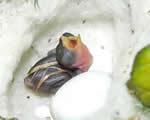
A late spring held the rufous hummers back, but that's changing now as the migration sweeps into the Rockies. Another northward surge came for rubythroats this week, with our first sighting in Manitoba. Sharpen your pencils to write a story to go along with today's photo slideshow. A photographer shares the day-to-day images of tiny eggs and miniature babies. Photo: Verle Stuve
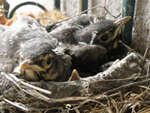
Robins have reached the end of the migration trail. We celebrate the remarkable changes we have witnessed, and we thank YOU—the citizen scientists whose reporting made it possible. Guess what happened in this nest of baby robins soon after the photo was taken? It's time to enjoy your backyard robins! Image: Sandra Bedford

Today's the day you've been waiting for -- the Big Reveal! The answers are in, the mysteries solved, and the game well played. Share your thoughts on our Annual Evaluation. And come back next week, it's your chance to finally "meet" all ten Mystery Classes.

It was a great week for birdwatching, and there's more of the same ahead. You'll be on your own to read the weather maps now, as our friend and ornithologist David Aborn writes his final report for this season. He's getting ready to go to Costa Rica, and here's his parting wish for you: "Whether you go to a tropical paradise or stay in your own neighborhood, I hope you have a great summer!"
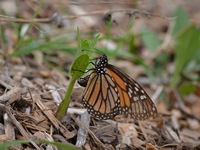
The migration map has hardly changed in a week! The quiet was typical for the first week of May. New butterflies are on the wing, but not in the numbers we will soon see. This spring, people have been astonished by the monarch's ability to find milkweed, even the tiniest plants. What senses do monarchs have, and how do they use them to find milkweed? Photo: Maureen Raquet

It's celebration time in Hines Creek, Alberta where their tulips have emerged. Review and enjoy the arrival of spring week-by-week with animated Test Garden maps. Show what you have learned this year with assessment projects and tools to help you organize. Enjoy one last view of the garden from a unique perspective. Finally, please share your thoughts with our Annual Evaluation.

A warm air mass on the East Coast was in place for nearly one week sending hummers northward ahead of schedule. How will this affect your migration predictions? Explore weather patterns and study migration animations. Find out what some people have called, "the tiniest hummingbird ever seen." Don't forget the Annual Evaluation! Photo: Alek Komarnitsky

The great surge of migrations is in full swing as May arrives across North America. Warblers, orioles, hummingbirds, and grosbeaks are being reported in great numbers. Listen for new sounds, and celebrate seasonal change this month. Visit a northern school watching for signs of spring, and a backyard habitat filled with songbirds. Image: Helen Nofz

Roller coaster temperatures in the North keep robin spotters waiting. Four of our Northern Observation Posts have yet to see and hear robins. Meanwhile, robins in many places are raising the next generation. What three things can newborn robins already do? Thanks to all citizen scientists who have helped tell this spring's migration story. Next week: wrap up!. Image: Sandra Bedford

Excitement grows as the annual cycle continues. The first Western cranes have reached their Canadian nesting grounds and Eastern cranes have 16 nests. This photo makes us wonder: how many eggs does it take to make another Whooping crane egg? It's time for the yearlings to leave mom and dad. Next report: baby chicks! Image: Vickie Henderson

It's week thirteen. Friday April 29 is the contest deadline. As you wait for next week's "Big Reveal", pick up your Certificate now and start celebrating a job well done. How did Mystery Class change how you see the world?

"I apologize for sending my report a day late, but we have been dealing with some very bad weather here in Tennessee," reports ornithologist David Aborn. See photos of the storm system that shut down most migration until yesterday. What can you expect this week where YOU live as we continue to learn how weather and songbird migration are connected?

With cool temperatures across the north, the migration moved eastward instead of northward this week. While the number of sightings continues to fall, fresh-winged butterflies are also appearing. Check out the mystery monarch photos. Can you guess what the strange-looking objects do, based on how they look? Photo: Dr. Lincoln P. Brower, Sweet Briar College

Whale mom/calf pairs are surging north in a week with good news and great news! In the past 13 days, ACS/LA volunteers spotted 98 northbound gray whales (including 36 calves)—the highest calf numbers to date since 2006. Thrills and chills abound in this week's Field Notes. What is the calf doing in this week's image? Photo: Michael H. Smith
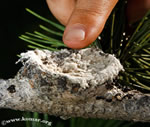
It is nest building season for many hummers that have arrived on their breeding grounds. Meanwhile many little migrants still have the urge to fly further and reach the place they will call home for their babies. What do you want to know about the hummingbird nesting cycle? Plug in to this important part of the hummingbird's life cycle.Photo: Alek Komarnitsky
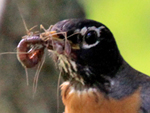
Few sighting reports may indicate that most homeward-bound robins have arrived. But robins are still eagerly awaited at the northern end of their breeding range. Where? While your returning robins are busy collecting twigs and constructing nests, explore the nesting cycle of robins with this week's challenge. In today's image, where do you think this robin is going next?. Image: Laura Erickson
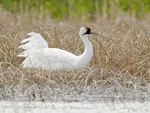
The race to the north continues! The last two crane-kids began migration from Florida on April 17. Several cranes of the Western flock are in the home stretch to Canada. At least 15 nests are the big news in Wisconsin. Do nesting math to calculate when the first chicks could hatch. Also, this season's answers to Ask the Expert! Image: Klaus Nigge

It's week twelve. Do you realize how far you've come since the start of Mystery Class? Retrace your journey in this week's season summary fill-in-the-blank Journal Page. April 29 is the deadline for the contest.
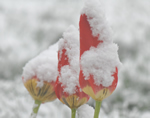
The stormy spring of 2011 continues with severe weather in the southeastern U.S. and surprise spring snow across the northern latitudes. Winter-y weather isn't over yet. Wait a couple days, spring will return. Step outside to observe other signs of spring happening. Spotlight on two Test Gardens this week. When will YOUR garden bloom?
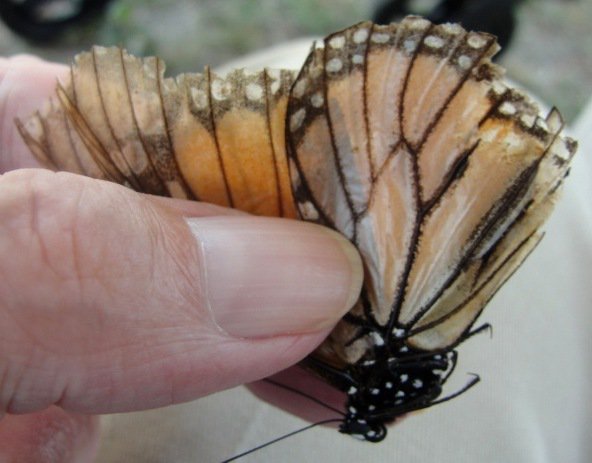
The monarchs from Mexico are reaching their final days, and a new generation is about to appear. Spring is a critical time for the monarch butterfly. This Earth Day, consider the monarch's need for renewal. Where is habitat most important in the early spring? A pie chart reveals clues. Photo: Harlen Aschen

"We are heading into the peak of spring migration for some areas, while migration is just starting to kick into high gear in other places," sums up ornithologist David Aborn. Each week Dr. Aborn helps us see how weather and songbird migration are connected. What can you expect this week where YOU live?

This week we compare two migrating species. Gather the data and study the maps. Answer the question: Why is the ruby-throated hummingbird migration ahead of the monarch migration? Earth Day is coming and it's time to think about caring for the earth and its creatures. Learn how the gorget got its name. Photo: John Doerper

Journey North observers reported a few more robins at higher latitudes and altitudes but six Northern Observation Posts are still waiting. What do you notice that's new to you in this image of a migrating robin in flight? In honor of Earth Day we offer an ecological mystery, and we salute an environmental hero.

Here come the Symbolic Monarchs! Watch your mailbox for the arrival of your new symbolic monarch, then continue the cycle of friendship and stewardship! Please follow Steps 1-4. We're hoping for 100% participation. Students are counting on you!
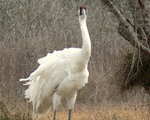
The first whoopers have crossed into Canada and only 10 remain in Texas. Two youngsters stubbornly remain in Florida while most of their Eastern flockmates are back in Wisconsin, where nesting has begun! Calculate this week's migration math for #6-10's journey north. Celebrate freedom for the Louisiana cranes with this week's video clip and salute Tom Stehn's help for cranes. Image: Sue Kersey

It's week eleven. Use this week's final clues to narrow your search one last time. Revisit your graph too. Can you now uncover the Mystery Class locations? April 29 is the deadline if you are entering the contest.

Another week of warm temperatures and south winds sent monarchs sailing, this time into states where milkweed is just emerging. "Will there be enough milkweed for the hungry caterpillars?" everybody wanted to know. What observations could you make to answer that question?
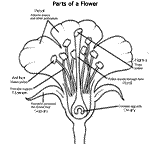
The map is getting more red each week, but tulips are just emerging in some gardens in Vermont, Montana, New Hampshire, and Alaska. In your blooming gardens lies an opportunity for a botany lesson. A slideshow will help you study the tulip flower and its separate parts. Discover some other related flowers. Check out a flower "sport." Maybe you have one in your garden, too.
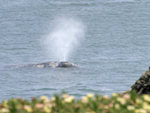
Whales have reached Kodiak Island, Alaska in time for Whale Fest.The northbound parade of cows and calves is starting right on time too, with official census Post #8 reporting the first pair on April 4. "Blows" are big in this week's report with an image, an activity, and a video clip with a surprise from the lagoon. Gray whales are honored for Earth Day 2011. Photo: Wayne Perryman

"We had our first fallouts of the year," came the happy news from ornithologist David Aborn. Wait until you see the list of new arrivals! There be more fallouts coming, but not for the next few days. Each week Dr. Aborn helps us see how weather and songbird migration are connected. What can you expect this week where YOU live?

Hummingbird migration is in full swing this week. As the males arrive they appear to be on a manic mission: Set up territories, defend them from would-be thieves, and impress a mate. Look for examples in the sighting reports and watch their antics in this week's slideshow. Find answers to your questions from our Hummingbird Expert. Photo: Russ Thompson

Springtime robins had a good week to push north. More than half the singing reports last week were from Canada. From south to north, observers report robins in various stages of migration and nesting. Robins instinctively know how to build perfect nurseries. But how will this robin decide where to build the nest?

Sunny skies and south winds lured six more of the 2010 chicks northward this week! Two remain in Florida. Many Aransas cranes migrated too. Discover what you don't know about crane territories and learn what clues cranes show when they're about to migrate. What is so astonishing about a mixed crane pair that began migration this week? Image: Klaus Nigge

It's week ten. The third set of interdisciplinary clues is here. Build upon the last two weeks' clues, and narrow your search even more. The final clues are coming next week. Look closely at this week's sunrise/sunset times. Do you notice anything unexpected?
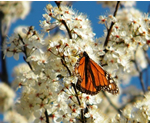
Look at them go! The leading edge of the migration advanced more than 200 miles this week on powerful south winds and in unusually warm temperatures. Back in Mexico where the migration began, Estela finds the sanctuary nearly empty. How can people help migrating monarchs? Dr. Karen Oberhauser answers this question among the many submitted by our readers. Enjoy!

It's springtime and there is a lot to wonder about the Test Garden. We have 13 years of garden data from one site in Virginia. Explore what you can do with this treasure trove. Drop in on a fantastic blog created just for the Journey North garden. Don't forget to Ask the Expert this week.

The cold front that moved across the country brought a lot of movement over the past week, but "This week's weather looks a little different," says ornithologist David Aborn. Each week Dr. Aborn helps us see how weather and songbird migration are connected. What can you expect this week where YOU live?

Spring weather has brought the rufous migration to a standstill, or has it? We explore how rain and snow in the Northwest affect rufous sighting reports. Rubythroat migration has been steady. How are the mouthparts of hummingbirds unique, and how are they adapted to certain flowers. Compare two migrants, monarchs and hummers, and find out how they fuel up. Photo: Russ Thompson
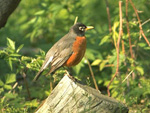
Robins are arriving and even singing at higher latitudes. When will reach interior Alaska where students are watching and waiting? See records from the past decade, then enter the "Early Bird Contest" and send us your guess! Read Answers from the Expert this week, and ponder why claiming and defending a good territory is so important to a male robin.

Weather slowed the migration this week. The 8 remaining crane-kids are still in Florida, but a few more cranes reached the finish line in Wisconsin. Which cranes in the Western flock are hurrying a bit and what makes them special? Calculate some migration math and join a crane family at their migration stopover in a video clip. In this image, which way is the wind coming from, and how can you tell? Image: Laura Erickson
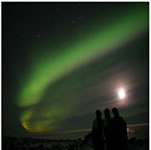
It's week nine. The second set of interdisciplinary clues is here from the Mystery Classes. Build upon last week's clues and narrow your search even further.

April brings the great greening. Nature's timing is perfect. Leaves emerge, insects hatch and birds arrive. The food chain comes alive after the pause for winter. Listen for new sounds, and observe the small changes that happen every day now. Fill in the maps with your sighting reports. Create a record of leaf out. Put it into a book you can keep and compare with each coming year. Image: Jean Iron

March came and now it's time to say goodbye to a month filled with weather surprises. In some gardens bare ground turned into red blossoms this month. What happened in your garden? Set aside the time to really look at your flowers with a lesson that takes its clues from Georgia O'Keeffe. Don't forget to Ask the Expert this week.

Cold temperatures held the monarchs back last week, and our migration map is showing some surprises. Did the observer in North Carolina see a monarch? Review the evidence and vote! Visit an Angangueo school with a U.S. teacher, and think about preparing for Earth Day. Have you created habitat for monarchs? If so, tell us how your garden grows!

Dr. David Aborn sums up the effects of last week's weather as we dig into this week's weather map. He says, "As numbers of arriving migrants continue to increase, there could be some good sightings to report next week!
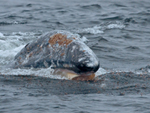
Gray whales are surging northward. The first leaders have reached Alaska. Reports are flooding in from Washington, and California Post #7 set a sightings record. Our animated diagram shows the order of travel; what are the reasons behind it? Discover what's so unusual in our Image of the Week. Prepare your questions for the Gray Whale Expert. Photo: Daniel Bianchetta
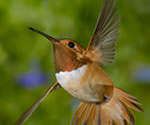
This week we focus on the sheer joy of the first sighting and watching hummers in action. Learn how these little birds zip forwards and backwards, sideways, up and down. Haven't seen one yet? Study today's map and predict when they will reach your backyard. The first rufous has been spotted in Alaska, 800 miles north of the others. Photo: Martin Dollenkamp

What changes we've seen during the month of March! A robin chorus now sings across the United States. Next, find out about our Northern Observation Posts (NOPs), 17 locations where spotters wait, watch and listen for robins in the northern reaches of the continent. How long will it be until robins arrive? Image: Christine Haines

It's week eight. The first set of interdisciplinary clues are here. Week-by-week, these clues reveal fascinating facts that will help you narrow your search and get progressively closer to pinpointing the secret locations.

Whoop, whoop and away! On the first day of spring, two of the 2010 youngsters wintering at St. Marks began their first journey north. The first birds to leave Texas have been reported in Kansas, while a whopping 48 older cranes in the Eastern Flock have landed on the Wisconsin nesting grounds. Cranes migrate in small groups that leave at different times. How does this help the species survive? Image: Laura Erickson

Spring has officially arrived, and it has sprung in typical fashion. Warm in some parts of the continent and tulips are setting records for their early arrival. Snow melted off the test garden in Haines, Alaska and the tulips have survived. What makes them so hardy? Visit a school that brought their test garden inside to study. Gather your plant-related questions for Ask the Expert this Friday.

Monarchs are pouring out of Mexico now, and the leading edge of the migration has already entered Oklahoma. Picture a trail of eggs 1,000 miles long, stretching from Michoacan to Oklahoma. What happens to all of those eggs? This week, explore the challenges monarchs face that can impact the growth of the population.

"LOTS has been happening with songbird migration the past couple of weeks!" comes the latest word from ornithologist David Aborn. He's back from Nebraska's Platte River and shares photos of the migration spectacle that draws birdwatchers from all over the world. This week's weather map indicates that folks in the western US will finally get some fine birdwatching. See what to expect where YOU live.
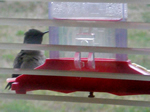
Southerly winds pushed the rubythroat migration into 4 new states this week. Why are rufous hummers already into Canada while the rubies are still in the southern Gulf states? Try your hand at making some hummer feeders. Last chance to gather your questions and submit them to our Expert by March 25. Photo: Natalie Osborn Smith
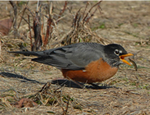
More robins pushed into Canada this week, eagerly awaited at their summer homes. Observers report more robins exhibiting spring-like behaviors. For example, it's worm hunting season and people watch with wonder: How do robins find earthworms? What senses do they use? Image: Elizabeth Howard

It's week seven. Longitude Clues are here at last! Use the clues to estimate the approximate longitude of the Mystery Classes. Put the sites in order from east to west. Then join in a "rap" up of longitude with today's music video from one of the secret sites.

Here they come! The mass migration from Mexico is underway, and monarchs are appearing on the breeding grounds to the north. Three cheers for the monarchs that survived the long winter in Mexico! During spring migration, each female monarch leaves a trail of eggs behind her as she travels. As you track monarch migration this spring, think of the hope embodied in tiny eggs.

Happy West Virginia gardeners were dancing in their garden this week. Under melted snow the students found green shoots! Across the map Test Gardens are blooming. Study map animations using the mapserver this week. What patterns can you see as you study the Test Garden maps over time? Find out if spring moves from south to north. Decide if you are having an normal spring.

The migration is in full swing, with the leaders passing British Columbia. Spotters in California reported their first cow/calf pairs this week. In the nursery lagoons, serious spring training occupies the cow/calf pairs preparing for their journey north. Except for puzzling numbers at one post, it's shaping up as a whale of a migration! Photo: Renee Bonner
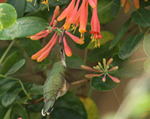
Ruby-throated hummingbirds have already been sighted in 6 states. When and where will they move next? Keep predictions and records this spring. Explore how hummers keep their engines running. Use activities and resources to explore how these tiny birds find the food they need. Gather your questions and submit them to our Expert by March 25. Photo: Joan Garvey.
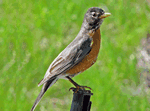
Cold, wet weather may have kept robins from a big push northward, but our maps show an increase in robin abundance. This week, explore robin vocalizations and learn what your backyard robin might be saying. Meanwhile, keep listening and watching for robins in your own home town. Put YOUR robin on the migration map! Images: Laura Erickson

The first cranes from both migratory flocks are northward bound! Learn how to tell a Whooping crane from other big black-and-white birds. Does our image of the week show a Whooping crane? Meet Al and Diane, the Western flock's most productive pair. Image: Jeannette Parker

It's week six! How will your photoperiod graph look by the end of March? Build skills for next week's special Longitude Clues by setting up time zone clocks. Explore local times around the world.

Variable spring weather continues. Since our last update there have been 26 more gardens reported emerged! All total, 18 gardens have bloomed. See how gardens can become a springboard for using math and language arts skills. Try using the plant growth chart to measure and observe in the garden during these days that you can almost see the tulip plants grow.

Waiting for signs of a mass migration—a grand exodus that could occur any day—Estela Romero found the sanctuary at El Rosario still butterfly-filled. The monarchs can't stay in Mexico much longer, but they can't move north too quickly either. This week, explore how seasonal change affects monarchs, and the timing of their spring migration.

"Migrants keep trickling in," says ornithologist David Aborn, "and hopefully it won't be long before we start seeing some bigger movements." See why this week's weather map indicates migration will stay slow for a few more days, and what to expect where YOU live. Dr. Aborn sends a link to a crane cam on Nebraska's Platte River. He will be there next week for the migration spectacle of "crane central."
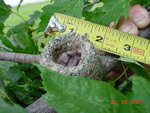
Find many new rubythroat sightings on the map this week despite variable weather along the Gulf Coast. Keep an eye on the weather to predict where and when the migration will advance this spring. Why are most early hummingbird sightings males? What do you wonder about hummingbirds? Gather your questions for Ask the Expert! Photo: Dorothy Edgington
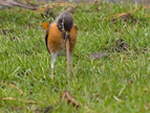
Robins are starting to sing across the United States, but not yet in Canada. The robins are returning, and it's time to salute another sign of spring: the lowly earthworm. They migrate only a few feet, but the timing of their arrival makes earthworms the unsung heroes of robin migration. Thanks for keeping your eyes open and your ears tuned so you can report robin activity in your area. Image: Wayne Kryduba

It's time to zero in on the line that divides the globe into east and west. This week, learn more about longitude lines to prepare for special clues coming March 18th.

Early-bird butterflies are heading north by now, and soon millions of monarchs will leave Michoacán en masse. Mexico's dry season is one of the pressures that forces butterfly colony break-up. Monarchs must have water, and their habitat is bone dry. Estela Romero shows how local people experience the dry season. How do Amy, Karla and César say families can conserve water?
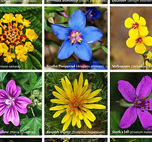
To celebrate the first test gardens blooming this spring we take a closer look at flowers. What does a flower really look like? Try describing them in words and pictures. Four blooming gardens share the spotlight. The map has many more emerging gardens this week and they are showing up in new places.

"We have a migration," proclaimed Michael Smith after a big day of northbound sightings. Visit the lagoons in this week's slideshows and video clip. Touching a baby whale, the teen in this image tells how it feels. What does it mean if a whale-watcher calls 'BLOW, 300 degrees at 45 mil'? Decode when you learn some whale watcher's lingo. Join us! Photo: Keith Jones

"Things are starting to happen!" writes ornithologist David Aborn. A recent influx brought welcome reports of swallows and martins. Songbirds are beginning to arrive from the topics after an 18-hour, nonstop flight across the Gulf of Mexico. Find out what a fallout is, and why fallouts mean good birdwatching.
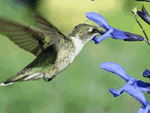
Just like clockwork, the first migrating ruby-throated hummingbirds showed up on US soil last week. How can spotters distinguish a new migrant from a winter resident? How did they get here? When is the wind just right for a successful migration? Let's dig into these questions and more in this week's slideshow. Photo: Russ Thompson

Change is in the air! March is the month of peak robin migration. Our checklist helps you get ready. Explore our photo gallery and get inspired to Ask the Expert your questions. Compare maps and predict: When will your robin sing its first spring song? What are the robins "saying" in this week's image? Image: Christine Haines

March is a time of dramatic change. Make a temperature timeline this month. Record each day's high, low, and average temperatures and add all the signs of spring you notice. Spring officially begins on March 20, but when does it begin unofficially for you? Think about it. Send us your sightings. Keep your eyes and ears open and follow along on spring's adventures with Journey North!

Happy news comes from the wintering grounds of both migratory flocks: A record number of 181 Whooping cranes have been confirmed in Texas, and the ten ultralight-led chicks are maturing at the two Florida release pens. Why are blue crabs so important to cranes, and how do they eat those clawed crustaceans? This week's photos, video clip, stories and field reports are packed with fascinating facts as we wait for migration. Image: Laura Erickson

Why are clocks around the world set at different times? This week, explore questions about time to get ready for special clues coming in mid-March.
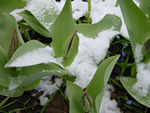
Warm temperatures across much of the continent last week brought color to the Test Garden map. Our first blooming gardens are reported. Now we watch as snow and cold are predicted in the Pacific Northwest. What happens to plants when freezing temperatures hit? How might they affect water inside the cells of a plant? Try an experiment and think like a scientist.

Spring migration is quickly approaching! The first U.S. sightings could appear by the end of next week. Where have millions of monarchs found the energy they needed to survive the winter? Also this week, Estela Romero tells what it's like to live in Angangueo's cold mountain environment the way the monarchs do. "Brrrrr!" she begins.

Ornithologist David Aborn reminds us: "While migration may be slow for now, it won't be long before we are all up to our necks in migrants, so dust off your binoculars!" Get ready by enjoying his weather tutorial today. Then look forward to Dr. Aborn's weekly reports as you learn to read weather maps and predict when you will see songbirds traveling through YOUR locale!

The first ruby-throated hummingbirds could appear during the next week! At this time of year they can be at the northern coast of the Yucatan Peninsula, getting ready to make the journey across the Gulf of Mexico. Explore some essential migration questions while you wait. Find out about the Earth's landmasses while you play the globe-toss game. Photo: Osborn

Symbolic Migration Update: February 22, 2011
Estela Romero and the faithful red Volkswagen, Rocinante, have completed their travels visiting students and schools near the monarch sanctuaries. Which children received your butterfly with its message of goodwill and ambassadorship? Find out this week using the Journey North Search Engine.

With three weeks of photoperiod data, can you tell which Mystery Class sites are north and south of your hometown? This week, one of the seven wonders of the world reveals an additional clue.

How many monarchs in Mexico this winter? Explore the data scientists just released. Find out how the monarch population is measured, and consider what the data mean for conservation. Begin with a bird's-eye view of a butterfly colony, and try to estimate its size! Photo: Dr. Lincoln P. Brower, Sweet Briar College
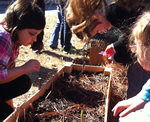
Is it springtime in Alaska? The Test Garden in Haines has emerged. What? This garden is over 700 miles north of its closest emerged garden neighbor. What would cause this to happen? Think about why, then dig in to some clues to solve this puzzle. You're sure to se some patterns and surprises. Visit two different climates this week and peek at their gardens.
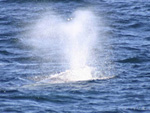
Whales are still arriving daily in Mexico but northbound sightings have begun. Our slideshow explores just how big these whales are: If your tongue weighed more than 1,000 pounds, you might be a gray whale! And is that a whale valentine in our Image of the Week? Discover why a gray's blow is heart-shaped and explore a tagged whale's travels. north. Photo: Michael H. Smith

As record-breaking blizzards swept across the nation, reports of migrating robin flocks flew across our maps. Tens, hundreds, even thousands of robins—were on the move. Find out what observers saw—and look for reasons why these winter wanderers travel in flocks. Image: B. Gross

What clues will you find in this week's set of sunrise/sunset data? Where can you kick a soccer ball between the Northern and Southern Hemispheres? Also, strap on some Latitude Shoes and travel around the globe along your line of latitude. Then share your travels.
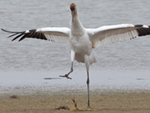
The youngest cranes of both flocks have safely migrated hundreds of miles to their wintering grounds. They are busy exploring and learning. See what the youngster in this photo just discovered! Visit both flocks on their wintering grounds in this week's slideshows and field notes. Learn to identify the new flock's Class of 2010 crane-kids by their banding codes. Welcome to a historic new season! Image: Diane Lloyd

Snow is the big word this winter: snow day, snow cover, snowball, snowflake, snow emergency! How might a bold blanket of snow affect the Test Gardens? Ask a question, make a prediction, and design an experiment. You're sure to see some patterns and surprises.
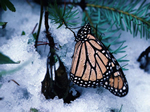
The monarch's winter habitat in Mexico is surprisingly cold. Temperatures can fall to freezing! This week, explore how the cool winter habitat meets the monarchs' needs for survival. Also, Estela Romero reports from Angangueo on the anniversary of last year's deadly landslides. Photo: Dr. Lincoln P. Brower, Sweet Briar College

Welcome to Journey North's global game of hide-and-seek! Somewhere under the sun there are ten Mystery Classes waiting to be found. Can you uncover their secret locations? Start with today's postcard, then see what the first set of sunrise/sunset data reveals.

Welcome to the Tulip Test Garden experiment! Somewhere across the vast continent tulips have emerged. Why are some tulips emerging while others are not? What does climate have to do with it? Pick a garden and gather questions. What special factors will help you predict when it will emerge and bloom? Lots of questions this week and a guide to help you find out more.

Pacific gray whales are still southbound and the news from the whale trail is all good! Delighted observers predict a record year. Discover why gray whales rule when it comes to amazing animal migrations in a new slideshow. Take a team treasure hunt for facts about our whale observation posts as you get set for the 2011 journey north. Welcome! Photo: Jim Dorsey

Welcome to Journey North's 18th season! We will be tracking the spring migration of the ruby-throated and rufous hummingbirds on their journey north this spring. Plus, this year we will be collecting your sightings of the 13 other species in North America. Meet and get to know our hummingbirds.

Welcome to Journey North's 18th season! The monarchs reached their winter home three months ago, after a long fall migration. Why did they fly so far? What's so special about this place? Start the season with a virtual visit. Experience the sights and sounds of a butterfly colony. Collect your questions—and get ready for a season of discovery!

Welcome to Journey North's 18th season! Join citizen scientists across North America as we track the robin's spring migration. Learn how to watch for robins and how to listen for their first song. What do robins do in the wintertime? What do they eat? The observations people reported in January help tell the story! Image: Fran Ludwig
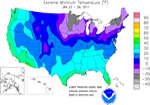
North America is big and your sightings describe many different climates. You reported not only great snow piles in the northeast but also the first sprouts of plants along the West Coast! Explore a map to see what might explain these various events. Examine how the sun's light shines on our planet Earth. Then show what you know after reading about bear hibernation!

Reminder: Mystery Class Begins Monday, January 31, 2011
Grab your suitcase and get started on Journey North's global game of hide and seek. Take your first step on Monday by recording your local sunrise/sunset times. It's not too late. Find all the information you need to begin your quest for the ten secret sites is in today's reminder. Bon voyage!
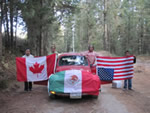
Symbolic Migration Update: January 25, 2011
In Mexico, the little red Volkswagen, Rocinante, is traveling far and wide to spread the word about monarch ambassadorship. Visit two special schools named for famous Mexicans. Take another peek at schools that may be taking care of YOUR butterfly. Get ready for our mid-February update when all schools are in the search engine.

The "Chass Five" has finished their 1,285-mile migration! They landed on their wintering grounds at Chassahowitzka (Chass) NWR in Florida Jan. 15. Like the other five members of the Class of 2010, wintering at St. Marks NWR since Dec. 15, the Chass Five will become wild and free over the next few months--but will return north to Wisconsin, unaided, this spring. Join us then! Well done, Class of 2010! Image: Judy Lyle

How cold is the air temperature today? What's the soil temperature where the tulip bulbs are nestled underground? This week, take a closer look at temperatures and locations. How might the Northern Hemisphere's different temperatures affect tulip growth this spring?

The Winter Solstice is behind us now, and the Northern Hemisphere is already seeing longer daylight hours. What will happen to mid-day shadows as we move toward the Spring Equinox? Explore water this month, and learn how special it is. In winter we can find water in its frozen state. Find out about a special winter sport in the Netherlands. (Hint: It is related to water.) Finally, take a look at the Earth from space and study how daylight is changing. Photo: Will Bachman
| Search Journey North | |||
| Copyright 1997-2012 Journey North. All Rights Reserved. Questions or comments? Contact us. | |||
